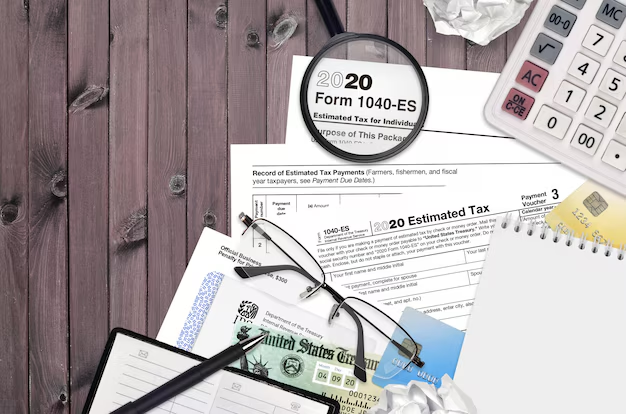Understanding IRA Distributions: Are They Taxed as Ordinary Income?
When planning for retirement, it's crucial to understand how different types of income will be taxed. One common source of retirement income is the Individual Retirement Account (IRA). As you transition from a working salary to tapping into your retirement savings, a natural question arises: Are IRA distributions taxed as ordinary income? This comprehensive guide sheds light on this question while exploring related tax considerations that affect IRA withdrawals.
🏦 What Is an IRA and How Does It Work?
An Individual Retirement Account (IRA) is a savings vehicle designed to help individuals save for retirement. There are different types of IRAs, each with distinct rules regarding contributions and withdrawals:
Traditional IRA: Contributions may be tax-deductible, offering an upfront tax advantage. However, distributions during retirement are typically taxed as ordinary income.
Roth IRA: Contributions are made with after-tax dollars, meaning taxes are paid upfront, but qualified distributions are tax-free during retirement.
SEP and SIMPLE IRAs: These are employer-sponsored retirement plans for self-employed individuals and small business employees, following similar taxation rules as Traditional IRAs.
How Are IRA Distributions Taxed?
The Taxation of Traditional IRA Distributions
When you withdraw money from a Traditional IRA, those distributions are generally taxed as ordinary income. But what does this mean?
Ordinary Income Tax: The taxable amount is added to your income for the year, which is then subject to your standard income tax rates. This rate will vary based on your overall income, deductions, and filing status.
Withholding: By default, financial institutions might withhold a percentage of taxes on Traditional IRA distributions, similar to income tax withholding from a paycheck. This percentage can often be adjusted depending on your tax planning strategy.
Roth IRA and Taxation Nuances
For Roth IRAs, the advantage lies in their tax-free distributions:
Tax-Free Qualified Distributions: Assuming you've met the criteria (such as the five-year rule and being over 59½), withdrawals from a Roth IRA are not treated as ordinary income.
Penalty-Free Withdrawals: You can withdraw contributions tax- and penalty-free, but early withdrawals of earnings might be subject to taxes and penalties if criteria aren't met.
Considerations for SEP and SIMPLE IRA Distributions
SEP and SIMPLE IRAs generally follow the same taxation rules as Traditional IRAs, meaning distributions are taxed as ordinary income once taken.
Penalties and Exceptions
While the focus is on taxation, understanding penalties is equally important:
Early Withdrawal Penalty: Taking distributions from a Traditional IRA before age 59½ typically incurs a 10% penalty on top of ordinary taxes.
Exceptions: There are specific situations, such as certain medical expenses or first-time home buying, where penalties might be waived.
🧠 Key Factors That Affect Your Tax Situation
Your tax situation when withdrawing from an IRA is influenced by several factors:
Timing and Strategy
The timing of your withdrawals can significantly affect your tax liability:
Required Minimum Distributions (RMDs): Starting at age 73, individuals must begin taking required minimum distributions from Traditional IRAs. Failure to take RMDs can result in hefty penalties.
Strategic Withdrawals: Carefully timing distributions or converting funds can optimize your tax situation, potentially minimizing tax liability through careful planning.
State Tax Considerations
In addition to federal taxes, consider how your state taxes IRA distributions:
State Income Tax: Some states may also tax your IRA distributions as ordinary income.
No State Income Tax: A few states do not tax income at all, potentially offering tax savings depending on your residence during retirement.
🔍 Navigating Related Tax Considerations
Social Security and IRA Distributions
Understanding how IRA distributions affect Social Security is another angle to explore:
- Impact on Social Security Taxability: IRA distributions could potentially increase the taxable amount of your Social Security benefits by increasing overall income levels.
Medicare and Health Care Costs
IRA distributions might influence Medicare costs:
- Income-Related Monthly Adjustment Amount (IRMAA): Higher income from distributions might increase your Medicare premiums due to income thresholds.
Estate Planning with IRAs
Consider how you can integrate IRAs into your estate planning:
- Beneficiaries and Taxes: Beneficiaries of IRAs might face different tax rules and options when inheriting these accounts, impacting their own tax liabilities.
🎯 Practical Tips for Better IRA Management
Here’s a quick guide to managing IRA distributions strategically:
📅 Plan Withdrawals Wisely: Consider deferring IRA withdrawals until needed or using the timing to match lower income years.
📊 Roth IRA Conversions: Explore converting a Traditional IRA to a Roth IRA during lower-income years to take advantage of tax diversifications.
📈 Consult a Tax Professional: Engaging with a tax advisor can help tailor your retirement and distribution strategy to fit specific financial goals.
📌 Summary of Key Takeaways
Here's a handy summary of essential points regarding IRA distributions and taxation:
- Traditional IRA Distributions: Taxed as ordinary income.
- Roth IRA Distributions: Tax-free if qualified.
- Early Withdrawals: Could incur penalties plus ordinary taxes.
- RMDs: Required starting at age 73 for Traditional IRAs.
- Medicare and Social Security: Distributions may impact premiums and taxable benefits.
📝 Final Insight
As you navigate the complexities of retirement planning and IRA distributions, remember that tax-efficient strategies can have a lasting impact on your financial health. By understanding the rules and considering the broader implications, you place yourself in a stronger position to maximize your retirement income. Whether deciding when and how much to withdraw, converting to a Roth IRA, or matching distributions with tax planning goals, informed choices lead to a more comfortable and secure retirement.

Related Topics
- Are 401k Withdrawals Taxed As Ordinary Income
- Are Annuities Taxed As Ordinary Income
- Are Capital Gains Taxed As Ordinary Income
- Are Dividends Ordinary Income
- Are Dividends Taxed As Ordinary Income
- Are Ira Withdrawals Taxed As Ordinary Income
- Are Long Term Capital Gains Taxed As Ordinary Income
- Are Money Market Funds Taxed As Ordinary Income
- Are Ordinary Dividends Taxed As Income
- Are Rmds Taxed As Ordinary Income